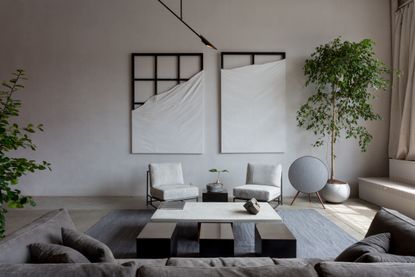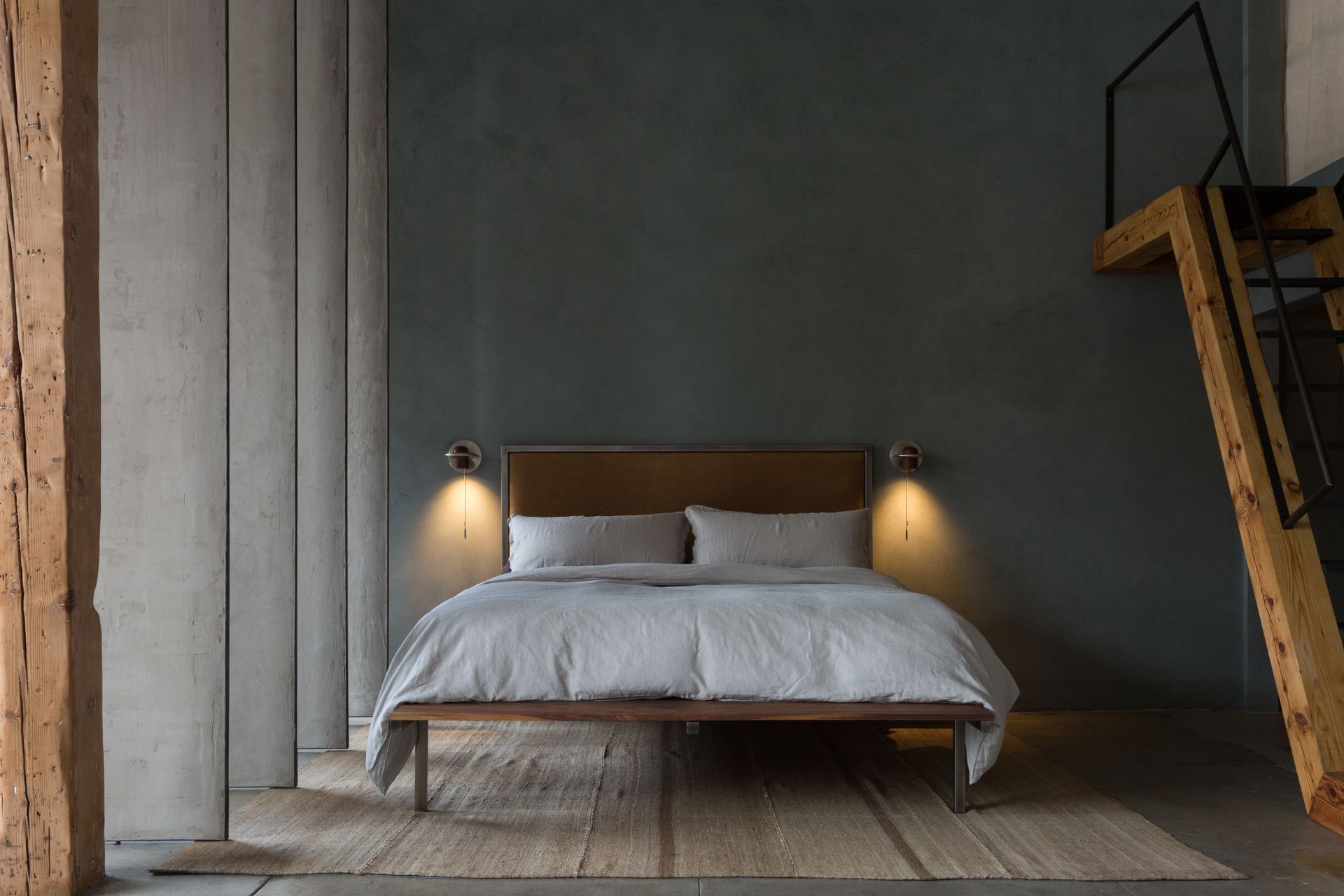What is Roman Clay paint? How to use the limewash alternative interior designers love
Roman Clay paint creates a beautiful mottled texture for walls. Here's how to use it, and how it differs from a limewash finish


If you're wondering what Roman Clay paint is, you wouldn't be the only one. This type of paint isn't the sort that you're likely to see in your local hardware store, however, top interior designers are learning to appreciate the beautiful effect it has for finishing walls.
With a mottled appearance similar to limewash or Venetian plaster, Roman Clay is a specialty paint finish with a consistency much thicker than regular paint. When used in design, it resembles natural stone with a soft, chalky texture.
'Roman Clay is a matte, lime-based plaster that is applied with a knife or trowel to interior walls,' says Jamie Davis, co-founder of Portola Paints, the biggest commercial manufacturer of Roman Clay paint. 'It is a cheaper, easier alternative to stucco, concrete, or other similar finishes.'
If you're keen to experiment with a different kind of wall texture, here's all you need to know about Roman Clay paint and how you can incorporate it into your design.

Lilith is an expert at following news and trends across the world of interior design. She's committed to helping readers embrace their creativity by sharing practical guides on how to make the most out of painting your home. For this piece she researched everything there is to know about Roman Clay paint and how best to incorporate it in our designs.
What effect does Roman Clay paint have?
Similar to limewash paints, Roman Clay has a matte finish with a mottled coloring. Both leave a beautiful, cloudy effect on the walls which creates an unusual aesthetic that adds texture and depth to a space. Design-wise, the most significant difference is that Roman Clay comes in a variety of colors, allowing you to be bolder with your design decisions.
'Adding a plaster or stone-like effect to your walls is a great way to breathe life into a space,' says Jamie of Portola Paints. 'Though there is plenty of visible movement and dimension in the finish, it goes on smoothly and has a soft, velvety feel.'

Where does it work best in the home?
The artisanal appearance of Roman Clay paint makes it especially suited to a home with a Mediterranean vibe or a modern rustic feel, but, from a practical point of view, this paint finish can be used anywhere in your home. Unlike limewash, it doesn't need a specifically porous wall.
From a design perspective, it makes a great statement as an accent wall, helping to bounce light around a room with it's slight sheen. 'While entire homes painted with Roman Clay are stunning, it can be a great way to add a little texture here and there as accents,' explains Jamie. 'Many of our customers will start by painting a powder room, a fireplace, a range hood in a kitchen, or a wall behind the bed in a bedroom.'
A post shared by Portola Paints (@portolapaints)
A photo posted by on
What is the difference between limewash and Roman Clay?
While they bear a visual similarity, the main different between Roman Clay and limewash paint lies in their application. 'While Roman Clay is applied with a knife in sweeping motions, limewash is brush applied, typically in a sort of cross-hatch pattern,' says Jamie. 'Roman Clay gives a softer, more suede-like feel.'
The consistency between the two paints also varies. Traditionally, limewash has a watered down base which leaves a patina finish on the walls. Roman Clay on the other hand is much thicker, hence why it's applied with a joint knife (also known as a drywall knife). Due its consistency, it's only suitable for painting interiors while limewash is a popular choice of exterior paint.
How do you seal Roman Clay?
Due to its chalky, stone-like texture, Roman Clay has to be sealed, especially in high traffic areas or spaces with higher humidity levels, like the bathroom. As well as the practical benefit of ensuring the paint lasts longer on your walls, there's a visual benefit to sealing Roman Clay, too. 'Our Roman Clay can be sealed with our Roman Clay Topcoat,' Jamie explains. 'It will add a slight eggshell sheen to the finish, giving a similar effect to a polished plaster.'
Be The First To Know
The Livingetc newsletter is your shortcut to the now and the next in home design. Subscribe today to receive a stunning free 200-page book of the best homes from around the world.

Lilith Hudson is the News Editor at Livingetc, and an expert at decoding trends and reporting on them as they happen. Writing news, features, and explainers for our digital platform, she's the go-to person for all the latest micro-trends, interior hacks, and color inspiration you need in your home. Lilith discovered a love for lifestyle journalism during her BA in English and Philosophy at the University of Nottingham where she spent more time writing for her student magazine than she did studying. After graduating, she decided to take things a step further and now holds an MA in Magazine Journalism from City, University of London, with previous experience at the Saturday Times Magazine, Evening Standard, DJ Mag, and The Simple Things Magazine. At weekends you'll find her renovating a tiny one-up, one-down annex next to her Dad's holiday cottage in the Derbyshire dales where she applies all the latest design ideas she's picked up through the week.
-
 The 12 Best Table Lamps for Reading —I'm a Certified Bookworm (and Shopping Expert)
The 12 Best Table Lamps for Reading —I'm a Certified Bookworm (and Shopping Expert)When it comes to table lamps for reading, I don't mess around. If you're the same, this edit is for YOU (and your books, or course — and good recommendations?)
By Brigid Kennedy Published
-
 "It's Scandi Meets Californian-Cool" — The New Anthro Collab With Katie Hodges Hits Just the Right Style Note
"It's Scandi Meets Californian-Cool" — The New Anthro Collab With Katie Hodges Hits Just the Right Style NoteThe LA-based interior designer merges coastal cool with Scandinavian simplicity for a delightfully lived-in collection of elevated home furnishings
By Julia Demer Published

